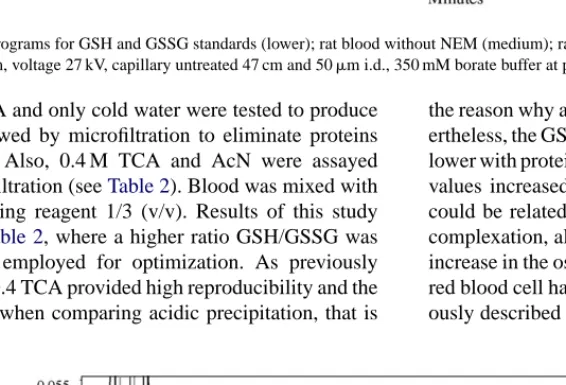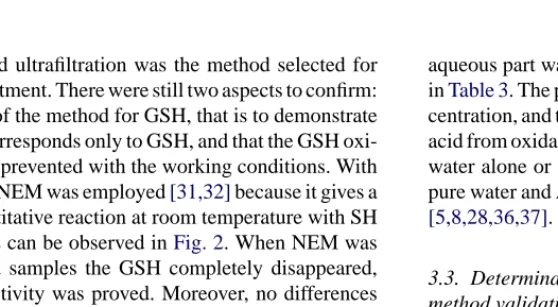Capillary electrophoresis of glutathione to monitor oxidative stress and response to antioxidant treatments in an animal model / Coral Barbas [et al ]
Texto completo
Figure


Documento similar
3 Total antioxidant capacity (mg ascorbic acid equivalent 100 mL -1 ) in unheated (control), conventional (CP) and microwave (MWP; high power/short time and low power/long
The evaluated parameters were related with the quality (stability, °Brix, pH), microbial growth, total phenolic compounds, ascorbic acid and antioxidant activity (ABTS, DPPH and
The expression ((having become common since the spring)) -the French original reads ((etant devenues populaires des le printems»- refers to the spring of 1708 and is
The expansionary monetary policy measures have had a negative impact on net interest margins both via the reduction in interest rates and –less powerfully- the flattening of the
In our sample, 2890 deals were issued by less reputable underwriters (i.e. a weighted syndication underwriting reputation share below the share of the 7 th largest underwriter
In the preparation of this report, the Venice Commission has relied on the comments of its rapporteurs; its recently adopted Report on Respect for Democracy, Human Rights and the Rule
In order to analyze the beneficial properties of the hybrid materials, the influence of rGO doping ratio on oxalic acid photocatalytic degradation and on oxalic acid adsorption onto
The hypothesis tested in this study was that there are no differences in decalcifying capacity of solutions of 15% EDTA, 15% citric acid, 5% phosphoric acid and that 2.5%